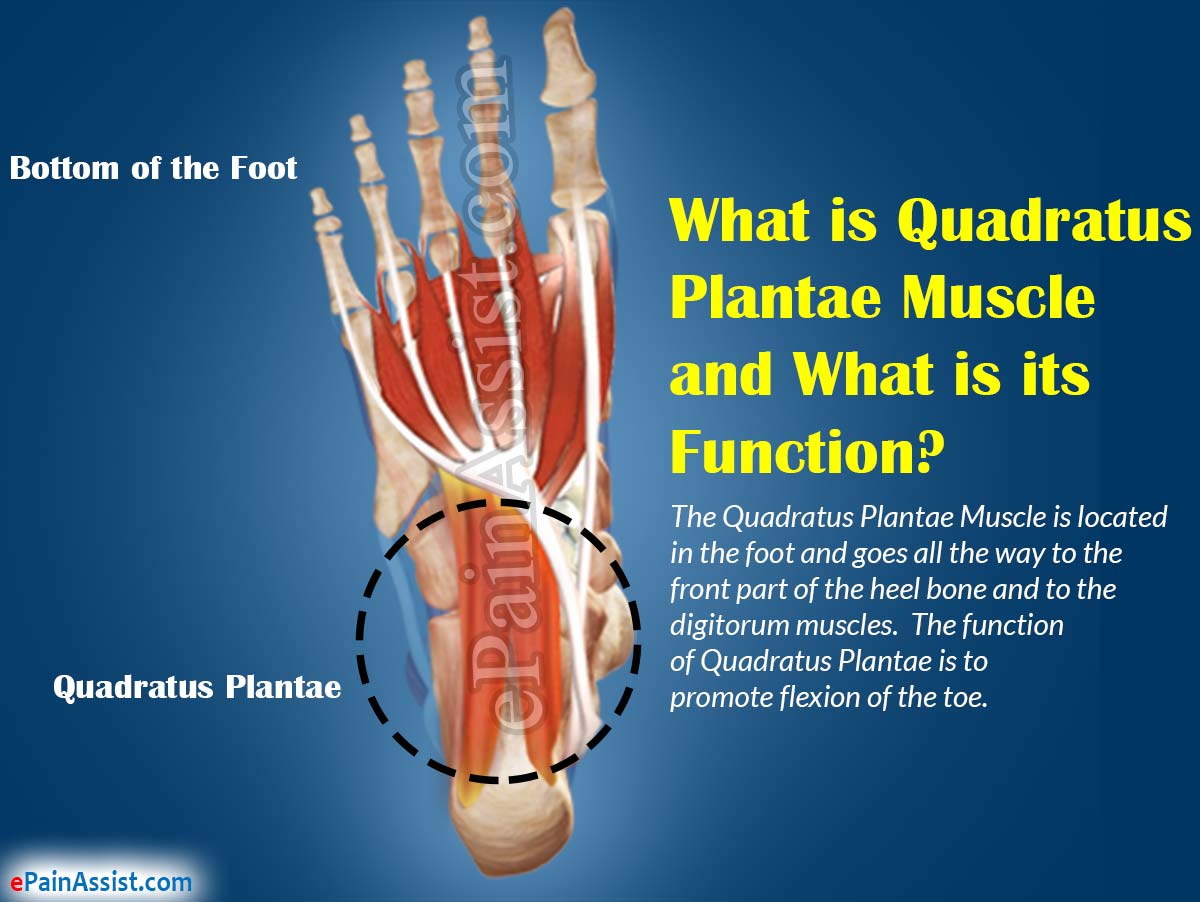What is Quadratus Plantae Muscle and What is its Function?
The Quadratus Plantae Muscle is located in the foot and goes all the way to the front part of the heel bone and to the digitorum muscles. The function of Quadratus Plantae is to promote flexion of the toe. This muscle also assists in maintaining stability of the foot with ambulation and other activities. A strain or injury to the Quadratus Plantae Muscle can cause severe heel pain and may also result in a visible deformity of the foot called as the clawtoe deformity. An individual with medical condition like diabetic neuropathy can result in damaging the Quadratus Plantae Muscle. A strain or injury to the Quadratus Plantae Muscle can mainly occur due to overuse normally by standing for a long period of time. People involved with long distance walking or running where they have to negotiate uneven surfaces are also at risk for Quadratus Plantae Pain or Strain. Treatment for Quadratus Plantae Pain or Strain is mostly conservative consisting of NSAID use, hot and cold packs, and stretching exercises.

Signs and Symptoms of Quadratus Plantae Muscle Pain or Strain
The classic presenting feature of a Quadratus Plantae Pain or Strain is severe pain in the heel of the affected foot. The patient will find it difficult to bear weight on that extremity. Any pressure put on the heels in the affected foot will result in excruciating pain.
What Can Cause Quadratus Plantae Pain or Strain?
Some of the activities that can result in strain or an injury to the Quadratus Plantae Muscle are:
- People who are long distance runners and have to negotiate uneven surface for prolonged periods of time are at risk for injuring the Quadratus Plantae Muscle
- People who are in an occupation like greeters or security guards who have to stand at once place for prolonged periods of time are also at risk of suffering from Quadratus Plantae Pain.
- Hiking in hills or rocky terrains barefoot can also result in an Quadratus Plantae Pain or Strain.
- Females who have a habit of wearing high heels also tend to injure and suffer from Quadratus Plantae Pain or Strain
- People who wear shoes that are too small and narrow can also injure the Quadratus Plantae Muscle.
Risk Factors of Quadratus Plantae Pain or Strain
Some of the medical conditions that can cause Quadratus Plantae Pain or Strain are:
- Plantar fasciitis
- Plantar warts
- Stress fractures
- Calcaneal injuries
- Foot injuries
- Bunion deformity
- Bone spurs
- Diabetic Neuropathy.
What is the Treatment for Quadratus Plantae Pain or Strain?
Adequate Rest: This is the first and foremost treatment for Quadratus Plantae Pain or Strain. Not putting weight on the affected heel for a period of time will allow the inflammation to settle down and also provide pain relief.
Hot/Cold Packs: The next step towards treatment of Quadratus Plantae Pain or Strain is application of hot and cold packs. The patient can apply ice packs to the affected area for 15-20 minutes two to three times a day. The patient may also apply warm compresses to the affected foot a few times a day to reduce swelling and inflammation and to also allow the muscle to heal at a faster rate. It should be noted here that hot and cold packs should not be applied simultaneously.
NSAID: During this period of immobilization, the patient can take antiinflammatory medications to control pain and swelling and cut down the inflammation.
Exercises: After about a week of not putting any weight on the affected foot, the patient may start gentle heel stretching exercises to regain lost strength and flexibility of the heel. The patient may do these exercises to tolerance and allow the pain to be their guide.
What is the Recovery Period for Quadratus Plantae Pain or Strain?
The usual recovery period for a Quadratus Plantae Pain or Strain is about two to three weeks after which the patient may weight bear on the affected leg as tolerated and gradually return back to normal activities.
